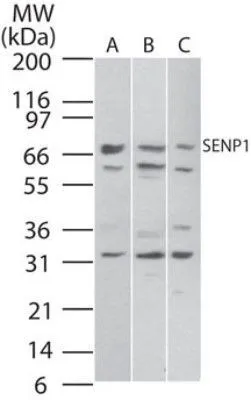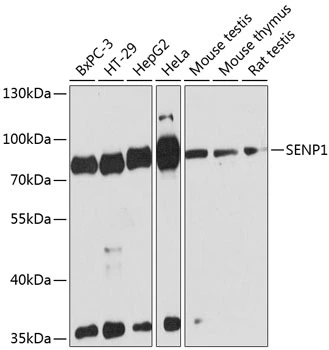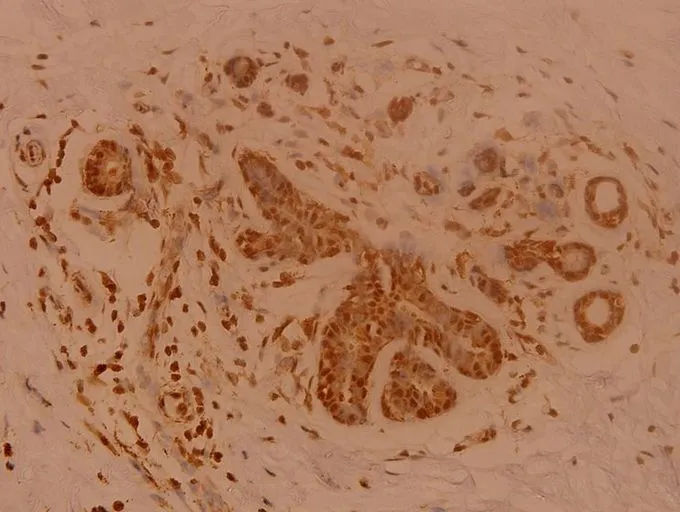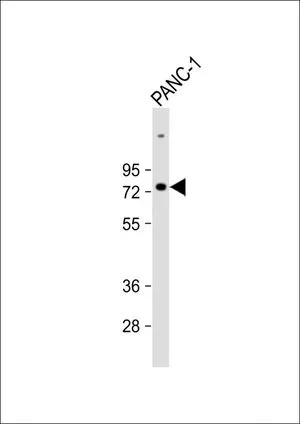
WB analysis of (A) Daudi, (B) HeLa and (C) NIH-3T3 cell lysates using GTX20254 SENP1 antibody.
SENP1 antibody
GTX20254
ApplicationsWestern Blot
Product group Antibodies
TargetSENP1
Overview
- SupplierGeneTex
- Product NameSENP1 antibody
- Delivery Days Customer9
- Application Supplier NoteWB: 3 - 5 microg/ml. *Optimal dilutions/concentrations should be determined by the researcher.Not tested in other applications.
- ApplicationsWestern Blot
- CertificationResearch Use Only
- ClonalityPolyclonal
- Concentration0.5 mg/ml
- ConjugateUnconjugated
- Gene ID29843
- Target nameSENP1
- Target descriptionSUMO specific peptidase 1
- Target synonymsSuPr-2, sentrin-specific protease 1, SUMO1/sentrin specific peptidase 1, SUMO1/sentrin specific protease 1, sentrin/SUMO-specific protease SENP1
- HostRabbit
- IsotypeIgG
- Protein IDQ9P0U3
- Protein NameSentrin-specific protease 1
- Scientific DescriptionThe covalent modification of proteins by the small ubiquitin (UBB; MIM 191339)-like protein SUMO (see SUMO1, MIM 601912) is implicated in the regulation of nucleocytoplasmic transport, genomic stability, gene transcription, and other processes. Sumoylation is catalyzed on target lysine residues by a multienzyme process and is reversed by desumoylating enzymes such as SENP1 (Yamaguchi et al., 2005 [PubMed 15923632]).[supplied by OMIM]
- Storage Instruction-20°C or -80°C,2°C to 8°C
- UNSPSC12352203
References
- Zhao X, Xia B, Cheng J, et al. PKCε SUMOylation Is Required for Mediating the Nociceptive Signaling of Inflammatory Pain. Cell Rep. 2020,33(1):108191. doi: 10.1016/j.celrep.2020.108191Read this paper






![WB analysis of various samples using GTX03252 SENP1 antibody [GT1340]. Dilution : 1:1000 Loading : 25microg per lane](https://www.genetex.com/upload/website/prouct_img/normal/GTX03252/GTX03252_33_WB_w_23053123_505.webp)
